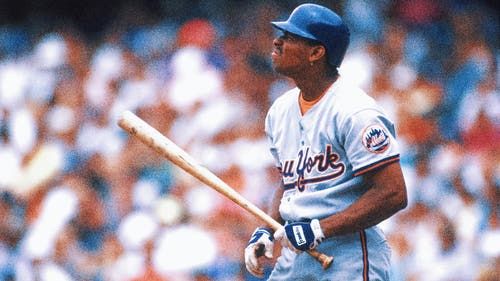
Preparation, patience, luck are hallmarks of Braves' drafts

ATLANTA -- Seven long years have elapsed since the Atlanta Braves selected an outfielder in Round 1 of the Major League Baseball draft.
That pick worked out OK, with Jason Heyward (14th overall selection) breaking into the majors at age 20. He's currently leading a young, but veteran-laden Braves club that's busy defending last year's National League East title.
On Thursday, the Braves went against the grain, so to speak, taking a bona fide hitting prospect in a draft that's supposedly rich in pitching. But then again, perhaps that's why the club couldn't pass on Braxton Davidson, a 17-year-old power hitter from North Carolina.
According to MLB.com, the Braves currently don't have an outfielder in their Top 10 Prospects, a two-tiered listing that includes five pitchers (Lucas Sims, Jason Hursh, Mauricio Cabrera, J.R. Graham, Cody Martin) and five infielders.
The timing of that could be fortuitous, since Heyward and Justin Upton are on track to become high-profile and big-money free agents after the 2015 season.
It's fair to wonder: Do major-league general managers ever dream of a draft-day system where teams can freely trade picks in Rounds 1 and 2? Or are these executives already taxed enough, given how their draft takes place in-season?
By contrast, Wren was asked Wednesday if he has regular and revealing conversations with his fellow GMs leading up to the selection process -- especially the ones drafting ahead of the Braves. After all, clubs aren't allowed to leapfrog upward and steal a prospect in the draft.
Surprisingly, the between-GMs chatter is minimal in the final days before the draft, says Wren.
"You get an indication, when you're at games, what other scouts are there. The scouts will have an expression: 'There was a lot of heat at that game,'" said Wren, alluding to the numbers of scouts, coaches, GMs and cross-checkers getting firsthand looks at prospects.
Luckily for the Braves, they haven't had to demolish their travel budget in recent years. The club has a solid track record of taking highly skilled prospects from Georgia, or those with in-state ties, and the southeast region, at large.
The list of heralded, in-state Braves draftees -- past and present -- includes Heyward, Alex Wood (University of Georgia), Macay McBride, Kyle Davies, Jeff Francoeur, Adam Wainwright (now of the Cardinals) and Brian McCann (now of the Yankees).
Among the recent Atlanta draftees, still developing in the minors, there's Lucas Sims, Jacob Heyward (Jason's brother), Steve Janas, Levi Hymas, Troy Snitker, Stephen Wrenn and Kyle Wren, the former Georgia Tech star who doubles as the GM's son.
"We've done very well in this state," concedes Frank Wren, with a modest tone. "We've never shied away from that. We've been (lucky) with the players in our own backyard."
Over the last six years, the Braves have fared well in drafting established players or top-tier prospects like Craig Kimbrel (selected twice by Atlanta), Andrelton Simmons, Evan Gattis, Mike Minor, David Hale, Aaron Northcraft, Joey Terdoslavich, J.R. Graham, Sean Gilmartin, Tommy La Stella, Anthony Rendon (now of the Nationals), Lucas Sims and Alex Wood.
"You know, it's always exciting. (The draft staffers) start, literally, the day after last year's draft and work all summer, all fall, all winter ... preparing for what's going to happen (Thursday) and the following three days," said Wren on Wednesday. "It's the culmination of a lot of work."
In the old, anything-goes days of the MLB draft -- try anytime before 2012 -- there would be numerous stories of small-market or medium-sized clubs passing on elite-level prospects, due to 'signability' worries.
But this weekend's draft marks the third straight year of Major League Baseball's "slot" compensation system, where the 30 teams are consigned to a rigid bonus-pool allotment for their draftees (overtly targeting Rounds 1-10) and then subject to potentially harsh penalties, if they should exceed that bonus ceiling.
For example:
**An overage tax of 75 percent on teams that exceed their bonus allotment by 0-5 percent.
**An overage tax of 75 percent on teams that exceed their bonus allotment by 6-10 percent ... along with forfeiting a first-round pick for the next MLB draft.
**For clubs exceeding the bonus allotment by 11-15 percent, the overage tax bumps to 100 percent ... along with forfeiting first- and second-round picks for the next MLB draft.
**For clubs exceeding the bonus allotment by 16-plus percent, the overage tax bumps to 100 percent ... along with forfeiting first- and second-round picks for the next two MLB drafts.
(There are also stringent cap rules for players drafted after Round 10 who command signing bonuses of more than $100,000 ... but we'll save that explanation for a later date. Or perhaps never.)
Consequently, with the new system, it now behooves prospects to get drafted as high as possible, since each draft slot has more bonus value than the subsequent picks.
"I think we're seeing more players signed. I think it takes out some of the guesswork," said Wren on Wednesday. "Players understand (the system), based on where they're picked, what their value is to the (drafting) club.
"... In our instance, we've seen more high school players signed. (It has) put a more definitive (signing) number in everyone's mind. It helps to get an agreement."
Back then, Dixon had nearly exhausted his amateur standing for baseball and football. At the same time, it proved the Braves weren't scared off by the notion of a multi-sport star bypassing baseball as a long-term option.
"Every case is an individual (one) because you're looking at what their intentions are," reasons Wren. 'Is this a summer job, so they can play football and earn a living?' Or do they really want to be a baseball player? Or do they want to be both?
"Everyone is different. We've seen college football players try to do baseball in the summer ... and primarily, it's a summer job."










